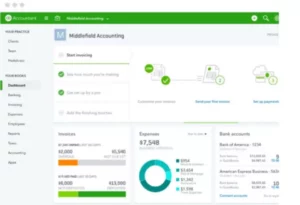No products in the cart.
Content

Wash sales can be a significant headache for a trader even if they don’t affect the amount of tax the trader has to pay. If you make hundreds of trades in the same stock, many of the trades are likely to result in wash sales. At some point, accounting for all the wash sales becomes nearly impossible. Eliminating this concern is a significant benefit of the mark-to-market election.

By 2021’s growth stock standards, the company would’ve checked all the boxes. The election has to be filed by the return due date —without extensions— for the year before the year you want the election to be effective. The last day to file the election for the year 2004 is April 15, 2004. For guidance on how to file the election, see the following pages. If you’re a trader, you may choose whether or not to make the mark-to-market election.
Practical Mark-to-Market Accounting Example
Accounting and reporting, are of great interest to our members. Them to write down their assets, which devalues their capital. Discover their bank sizes, assets, account safeguards, customer service, and other security…
What is the problem with mark-to-market accounting?
Mark to Market accounting rules have recently been blamed for weakening the balance sheets of banks and insurers as asset values fell during the credit crisis, forcing institutions to report current depressed prices.
Some corporations use it for pension plans and other purposes, while individuals use it to calculate their net worth. The mark-to-market method in accounting values assets based on momentary market conditions, also known as fair value. The value is calculated based on how much a company can make if it sells the asset today. With credit risks, which refer to the risks of a bank experiencing losses on its loans, Bank of America describes the lack of future mark-to-market considerations in their credit risk evaluations. So it’s not a concern here, because the bank is accounting for credit risk by other standards. Marking to market.The most obvious consequence of the election is that at the end of each year you must mark your securities to market.
Traders
The exchange marks traders’ accounts daily to match the market value by settling the gains and losses resulting from fluctuations in the security’s value. If, for instance, the futures contract drops in value on day two, the long margin account will be decreased while the short margin account will increase to reflect the new value. In the opposite situation, the margin account of the long position holder will be increased while the short futures account will be decreased. Mark-to-market losses occurs when an asset is marked to market at a lower value than the price paid to acquire the asset. For instance, mutual funds experience mark-to-market losses when their NAV is higher one day and drops the next. Mark-to-market losses are paper or unrealized losses expressed through an accounting entry rather than an actual sale.
You can learn more about the standards we follow in producing accurate, unbiased content in oureditorial policy. For example, if the asset has low liquidity or investors are fearful, the current selling price of a bank’s assets could be much lower than the actual value. The daily mark to market settlements will continue until the expiration date of the futures contract or until the farmer closes out his position by going mark to market long on a contract with the same maturity. For exchange traded derivatives, if one of the counterparties defaults in this periodic exchange, that counterparty’s account is immediately closed by the exchange and the clearing house is substituted for that counterparty’s account. Marking-to-market virtually eliminates credit risk, but it requires the use of monitoring systems that usually only large institutions can afford.
Provides a More Realistic View of Company’s Financial Status
A trader who has not made the mark-to-market election can deduct only $3,000 of net capital loss, with the excess loss carrying forward only, not back to earlier, profitable years. If you make the election, your trading loss isn’t subject to this limitation, and can carry back as well as forward. Mark to market is used in personal accounts, financial services, sales of goods, and even in the securities market.
It reflects pension plans’ current returns in assets, changes in discount rates on liabilities, and other gains or losses instead of moving the revenues and expenses from one period to another, as in the smoothing approach. Mark to market is an accounting standard regulated by the Financial Accounting Standards Board . This entity creates the accounting and reporting guidelines for businesses and nonprofits in the US. Under the FASB mark-to-market accounting rules “SFAS 157 Fair Value Measurements,” you can find the GAAP requirement to mark to market accounting, the definition of fair value, and how to correctly measure it. At the end of the fiscal year, a company’s balance sheet must reflect the current market value of certain accounts.
Risk Management
Beginning in 1997, the tax law has permitted securities traders to elect a method of accounting called themark-to-market method. Many securities traders will find this election attractive as a way to make filing simpler — and possibly reduce their taxes. To estimate the value of illiquid assets, a controller can choose from two other methods. It incorporates the probability that the asset isn’t worth its original value. For a home mortgage, an accountant would look at the borrower’s credit score.
- It incorporates the value of the assets compared to similar assets.
- In the closing month of the accounting year, each company must prepare financial statements where they report their asset value, among other things.
- They are treated as if they were sold for a price that aligns with the fair market value.
- Secretariat Economists professionals specialize in industrial organization, labor economics and finance.
- MVA, also known as fair value accounting or marking to market, requires that an asset or liability be valued according to its market price, that is, the current price at which it could be sold.
- Mark-to-market accounting can help banks and lending institutions determine the fair market of collectible collateral.
